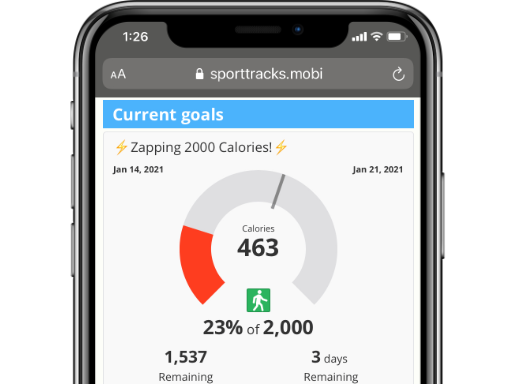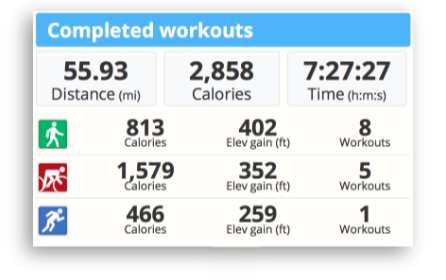Calories and Exercise
Understanding the basics of calorie burn and endurance sports
The calorie count of the foods we eat and the benefits of burning them with exercise are something you hear about all the time — yet the actual nuts-and-bolts about how it's all supposed to work are still abstract and mysterious. We wanted to shed light on the basics so we all can have a deeper understanding of calories.
What is a calorie?
The very foundation of this subject is confusing because calories themselves are not physical elements of food. We're constantly bombarded with advice to choose foods that have fewer calories, but they're not in food at all, they're units of measurement. Calories have a lot more in common with degrees of temperature than they do with fats or sugars.

Food is a source of energy. The nutritional composition of food determines how much energy is provided. If you think of energy as heat, a single calorie is the amount of heat that's required to raise the temperature of one gram of water by one degree Celsius. A single gram of water is equal to around 20 droplets, or a little less than a quarter of a US teaspoon. No matter how you approach it, defining a calorie is esoteric — yet they're constantly in the spotlight in everyday life.
Just as there are 1000 millimeters in a meter, there are actually 1000 calories in a single Calorie (note the capitalization). A diet soft drink that boasts to only have a single Calorie actually has 1000, and a McDonald's Big Mac has an eye-popping 563,000. It's time to hit the gym to burn some of this stuff off!
Caloric Intake and Exercise
The ideal number of calories you should consume each day varies depending on age, gender, size, and activity level. It's typically between 1600 and 3000, and if you take in more than you burn, you can gain weight. No matter what your size and age may be, it's incredibly easy to eat far more than your ideal number of calories per day.
Your body requires a certain number of calories just to carry out the basic functions of life, like breathing and digestion. This amount of calories is your Basal Metabolic Rate, or BMR. "Basal" isn't a scientist's name or the garnish on a pasta entree, it's another word for "base." It's important to know your BMR because it will help you determine the accurate number of calories that you need.
...it doesn't take an overwhelming amount of activity to stay ahead of the calories...
When you know your BMR and other daily caloric needs, it's likely that some weekly exercise will be necessary to burn off your caloric surplus. The good news is that it doesn't take an overwhelming amount of activity to stay ahead of the calories and maintain good health. Most people need to exercise vigorously 3 times a week. These workouts can be 25-minute "easy runs" or jogs, moderate but continuous lap swims, bike rides at a high cadence, or intense sessions of basketball or other aerobic activities.
Please note that a "vigorous" activity isn't necessarily an uncomfortable amount of exertion. You just need to get your heart-rate up to 75% of your Max HR and keep it there for a little less than half an hour. It sounds more difficult than it is. You can have a conversation at this level of intensity, so don't be intimidated and think you can't do it.
In addition to these aerobic workouts, every week should also have 3 less demanding activities. They should be 50 minutes a piece and could be long walks, bike rides at a casual pace, non-sedentary yard work, etc. Tracking all of these activities with a GPS watch or a fitness app can help you stay on top of your progress, as well as help you more accurately calculate your calorie burn.

Motivate yourself with calorie-burn goals
Anything you can do to inspire yourself to move is worth a try when it comes to burning calories and leading a healthy lifestyle. With a fitness-platform like SportTracks, you can easily create custom calorie-burning goals. You can set them for a day, week, year, or any span of time that you like. As you progress toward your goal, it will be clear how close you are to hitting it.
Your most current goal will be at the top of your SportTracks dashboard, which you can easily access with any kind of smartphone, computer, or tablet. You can set goals to be calorie-based, or you can create targets based on distance, time, number of workouts, elevation gained and more. You can create general goals, or goals based on specific sport types. Learn more in our Goal Tracking blog post.

Burning calories across all activities
It can be helpful to get a bird's eye view of your week to see if you're hitting your targets. SportTracks provides calorie-burn data for every workout on your dashboard, in your workout detail pages, on the compare workouts screen, your calendar and more. The card above is a weekly summary from the SportTracks calendar. If you track your bike rides with a different device or app than you track your yoga sessions with, SportTracks brings them all together.
If you use an activity tracker from Garmin, you can utilize this health data in SportTracks. This adds step-tracking, active time, distance, and calories burned to your SportTracks account. Plus, the calories burned data is the total from your activities and BMR.
Calorie data also provides an excellent way for more advanced athletes to monitor their overall volume metrics. Similar to how you would use TRIMP or Effort data, calorie data can provide an aggregate of various activities, from runs to rides to weightlifting and snow shoeing sessions.
Considering how notorious they are, it's surprising to learn that calories are actually nonmaterial units of measure, and are more akin to hot-water heaters than they are to turkey sandwiches. But it's reassuring to know that if you just follow some basic guidelines every single week, and utilize some specialized tools to keep yourself motivated and on-track, that you can stay healthy, active, and happily fed year round.
Thanks for checking this out! You can learn more about the basics of fitness in our Heart-Rate 101, Running Form 101, and Running Pace 101 articles.
| Article written by Sam Mallery, Director of Marketing, Zone Five Software Inc. |
